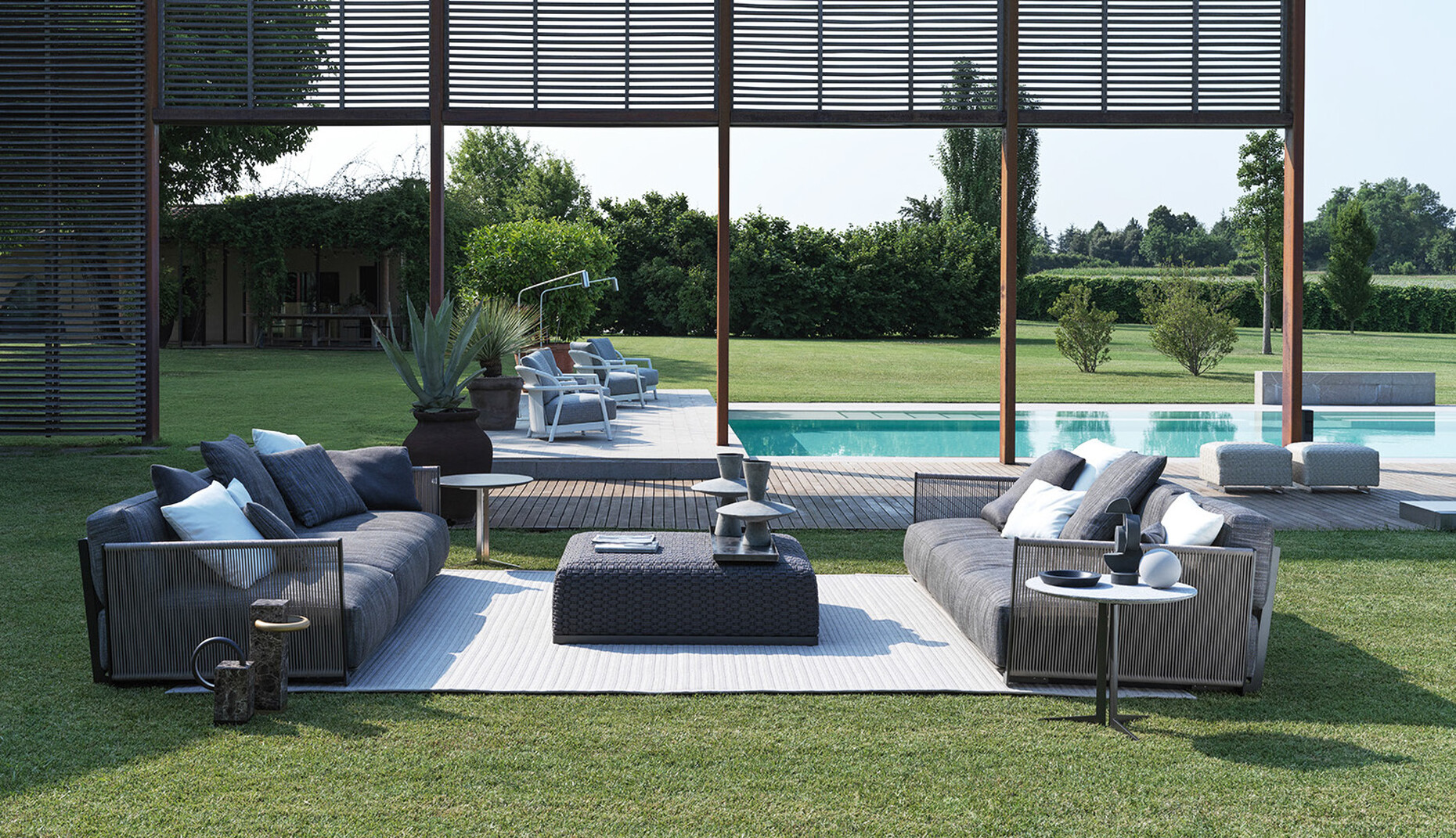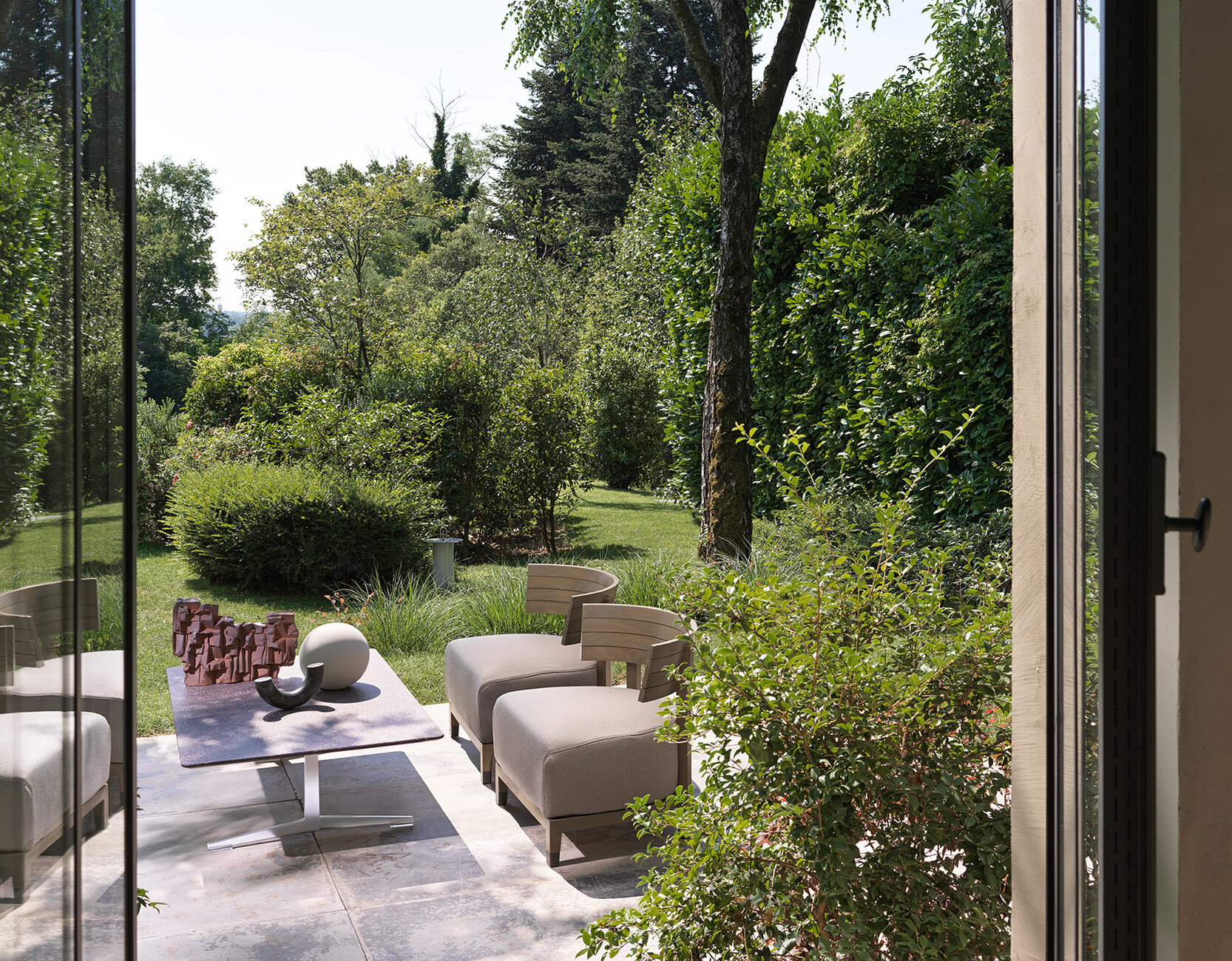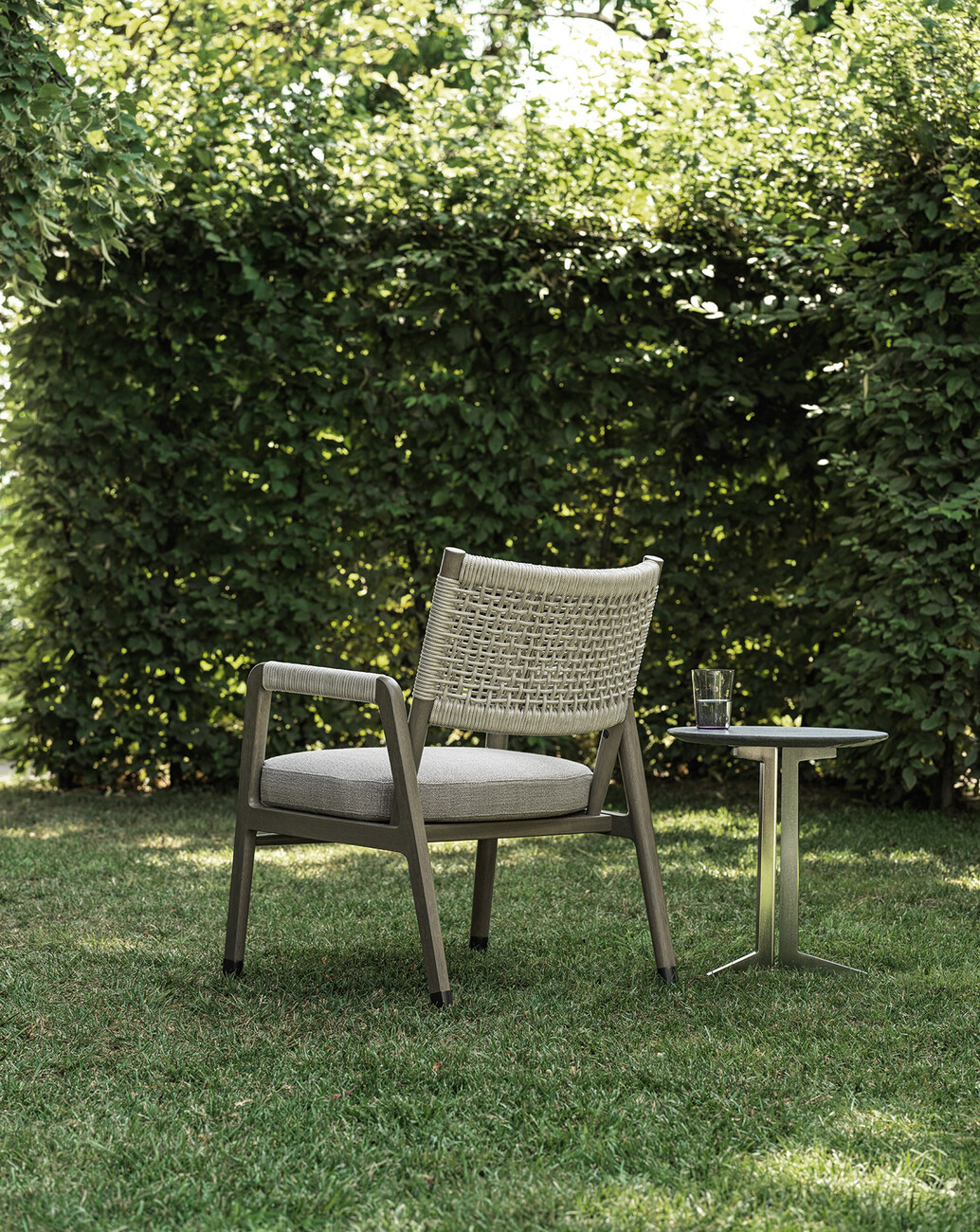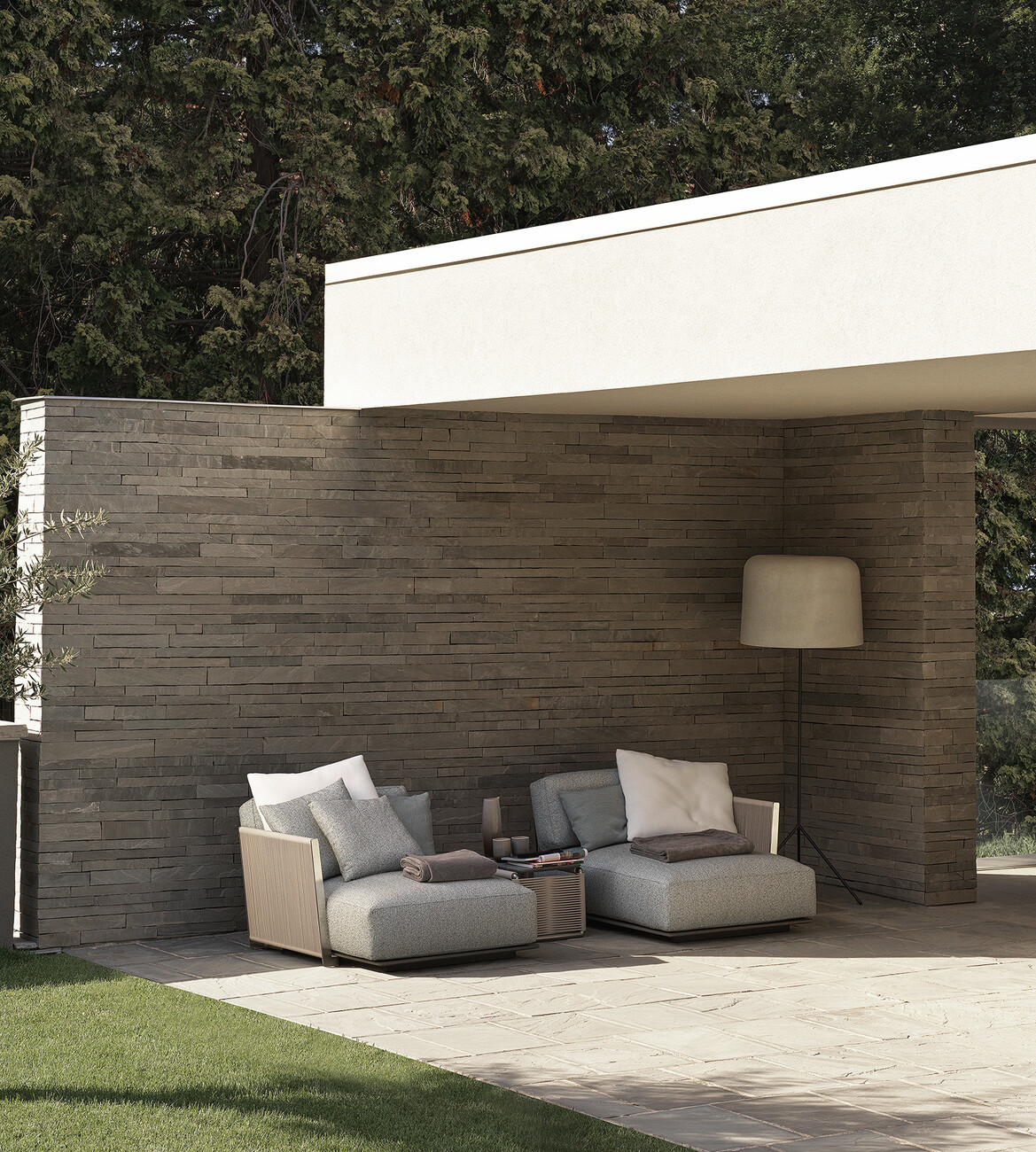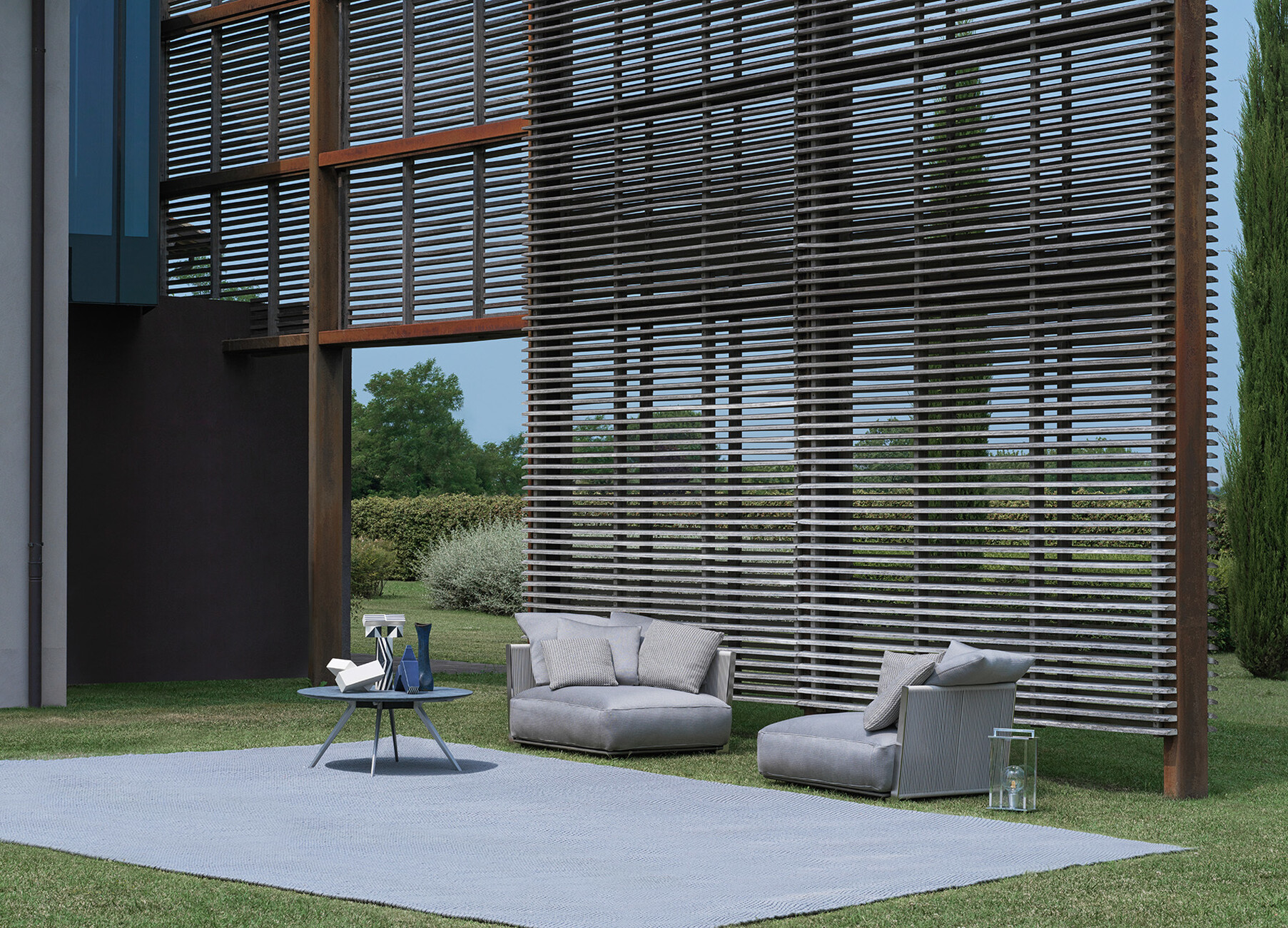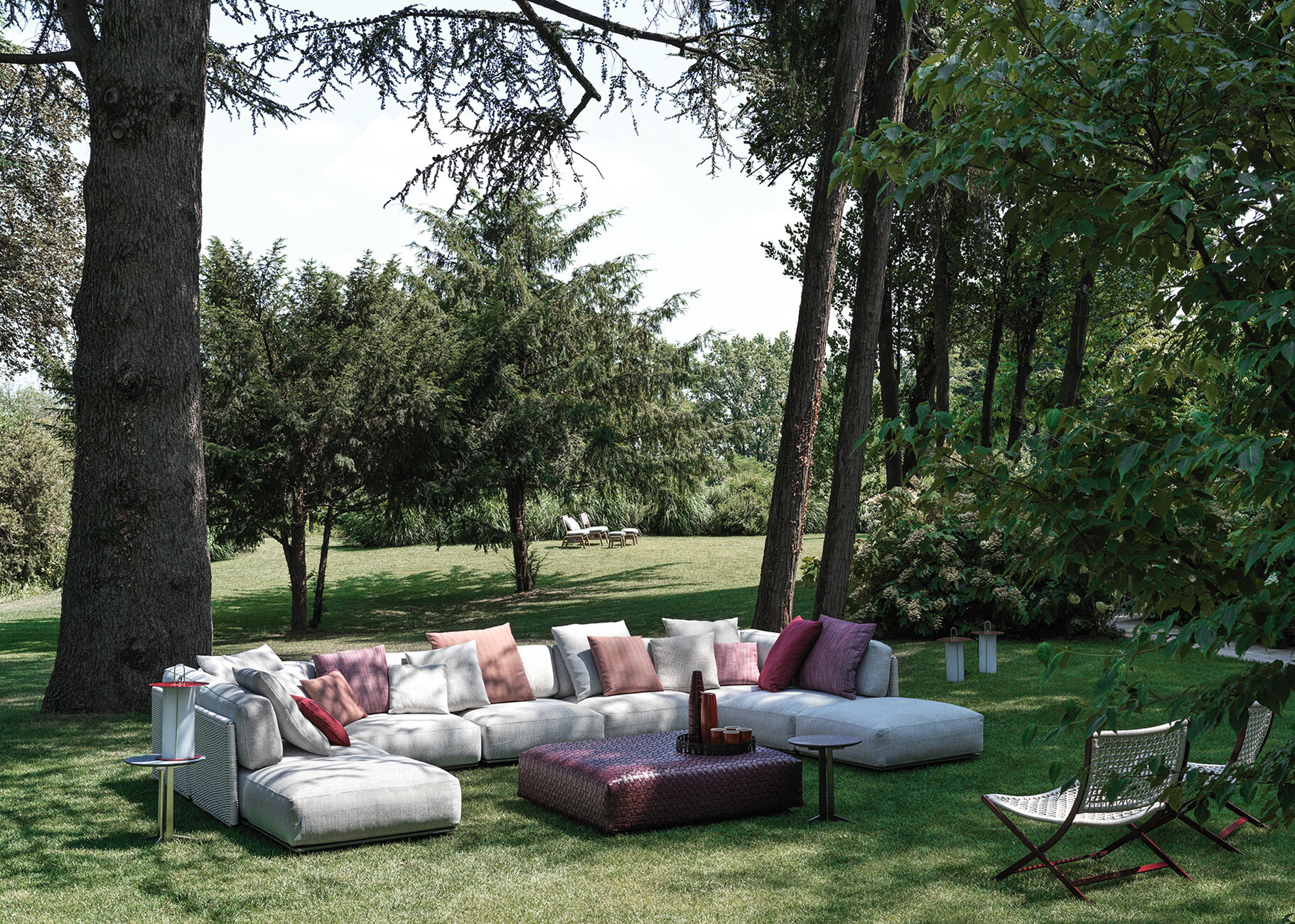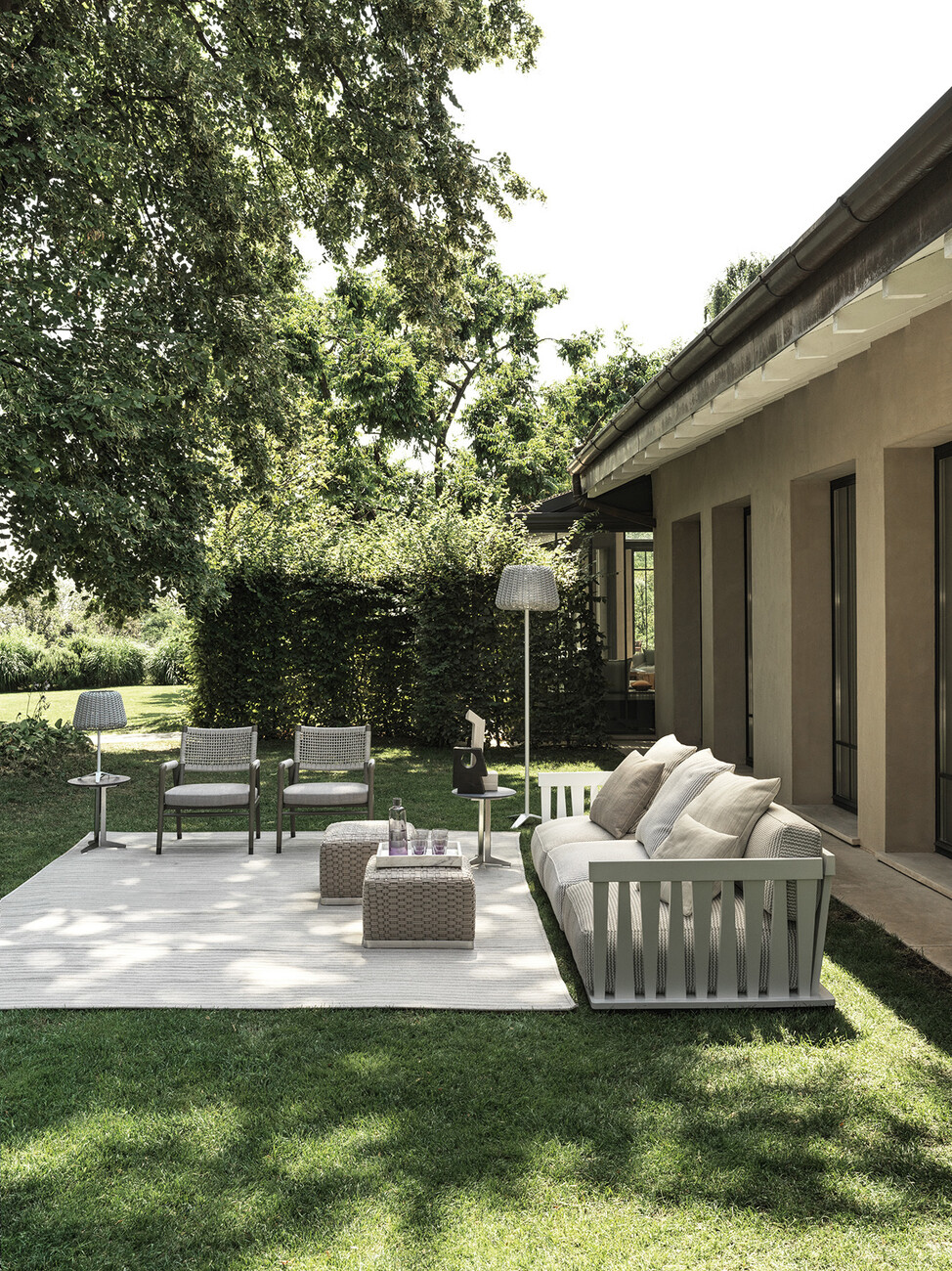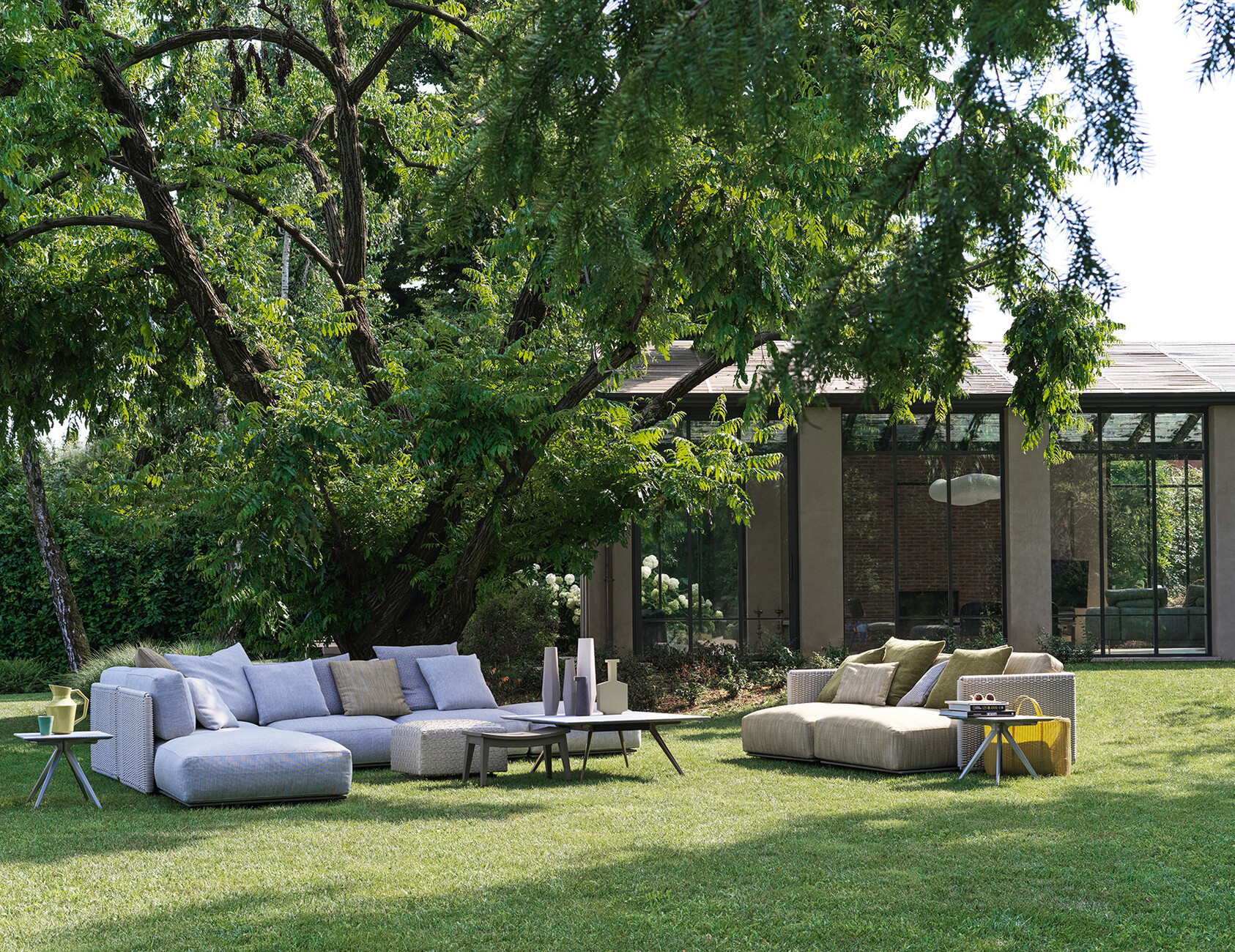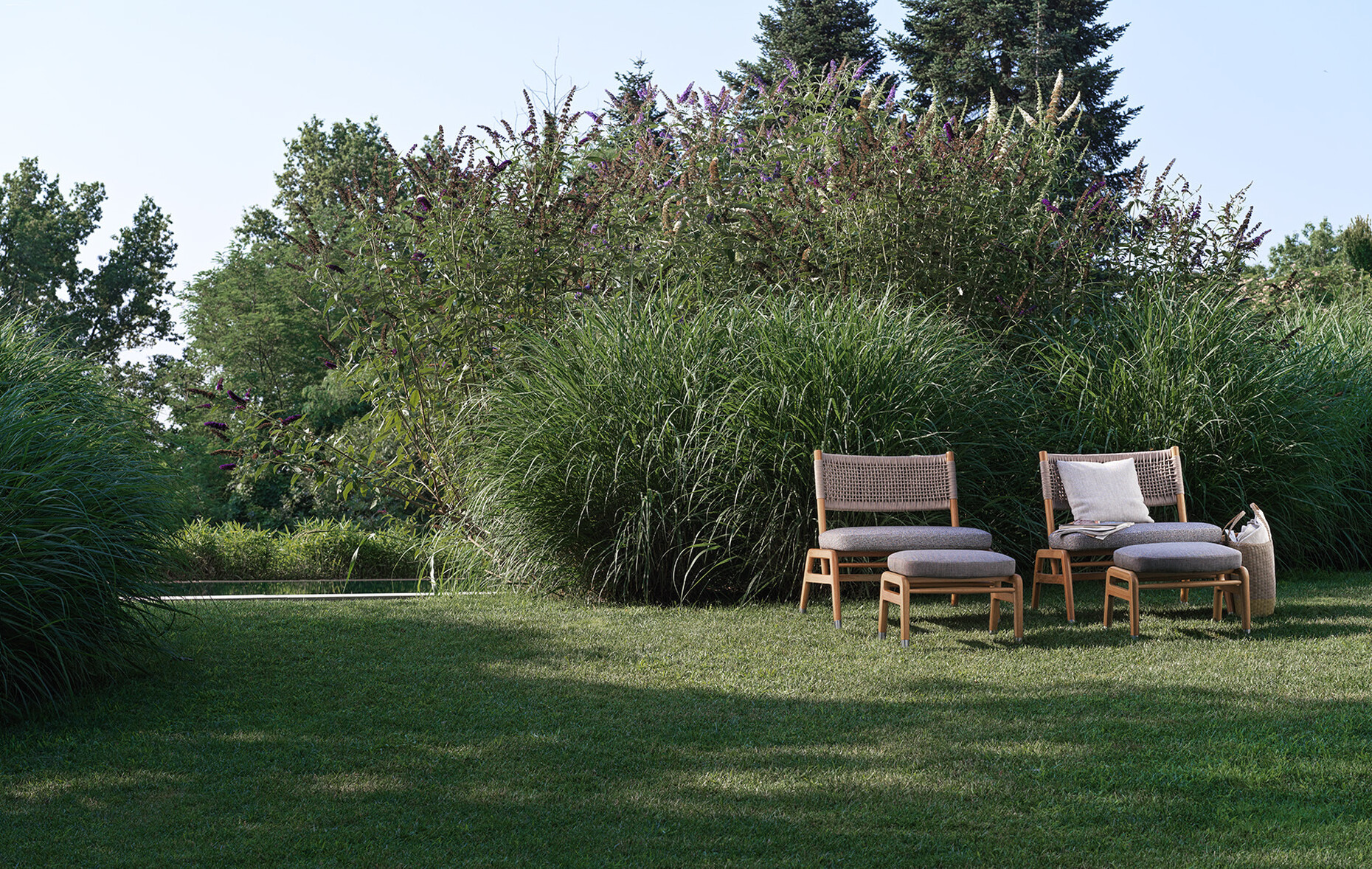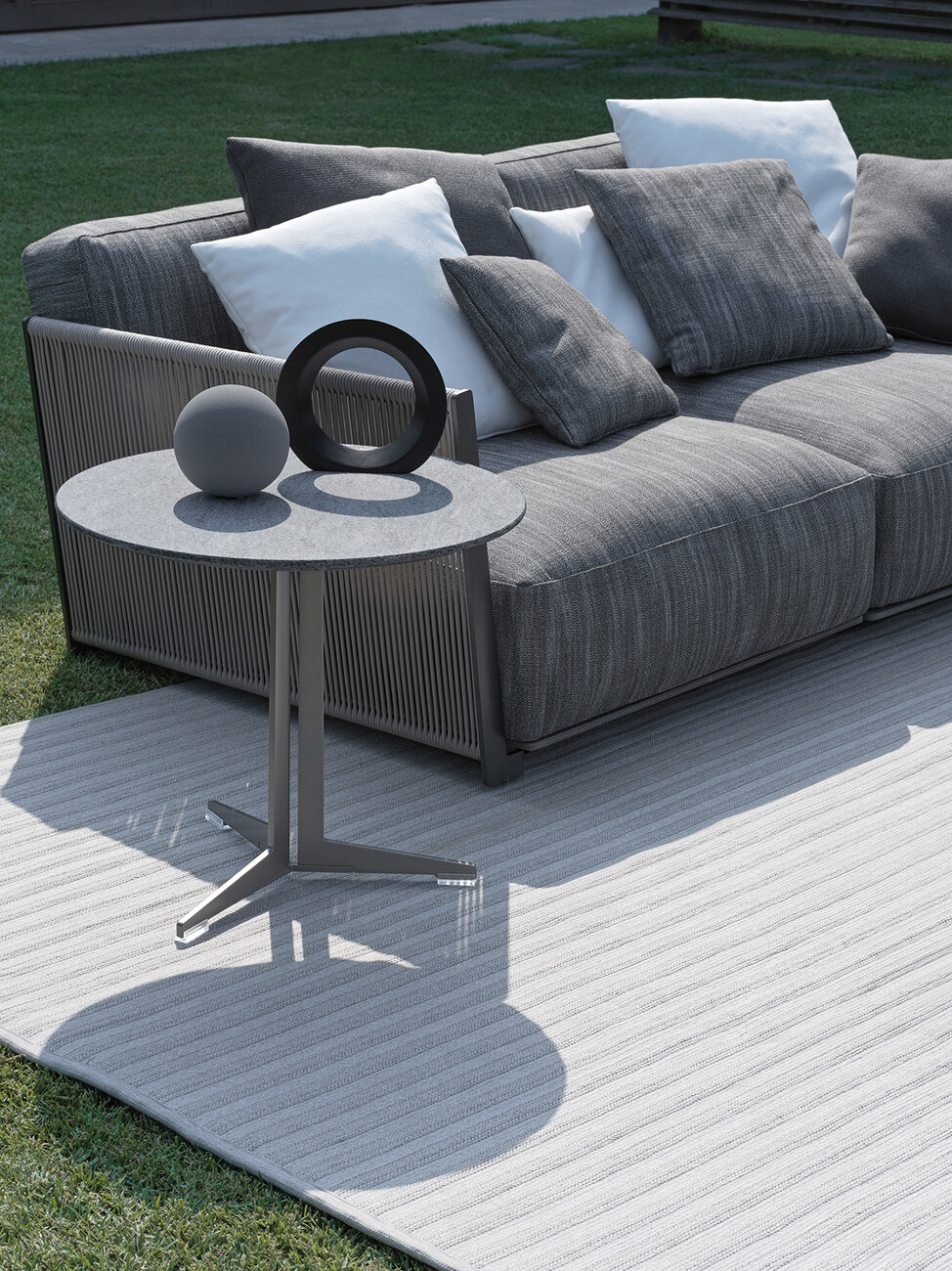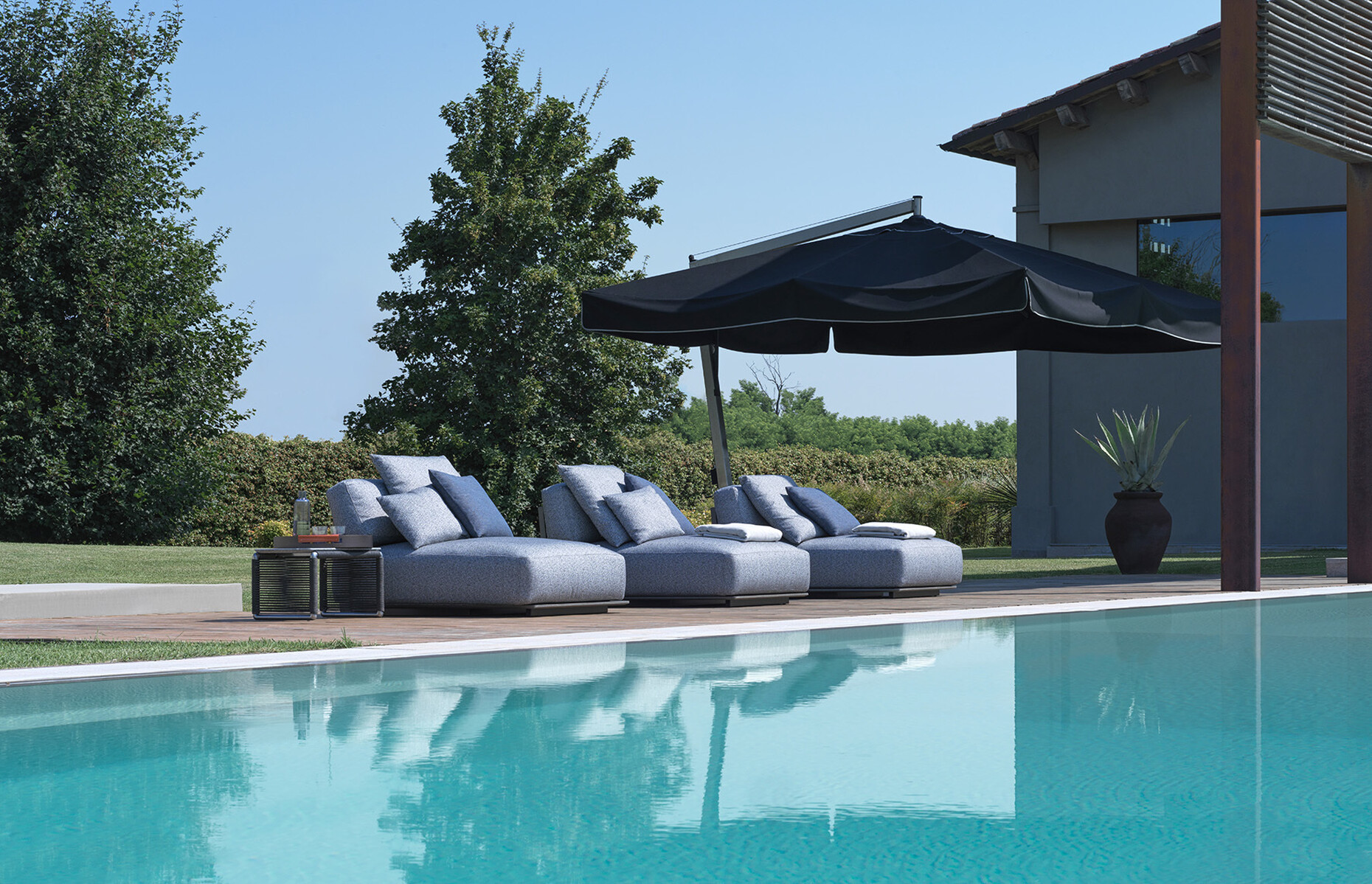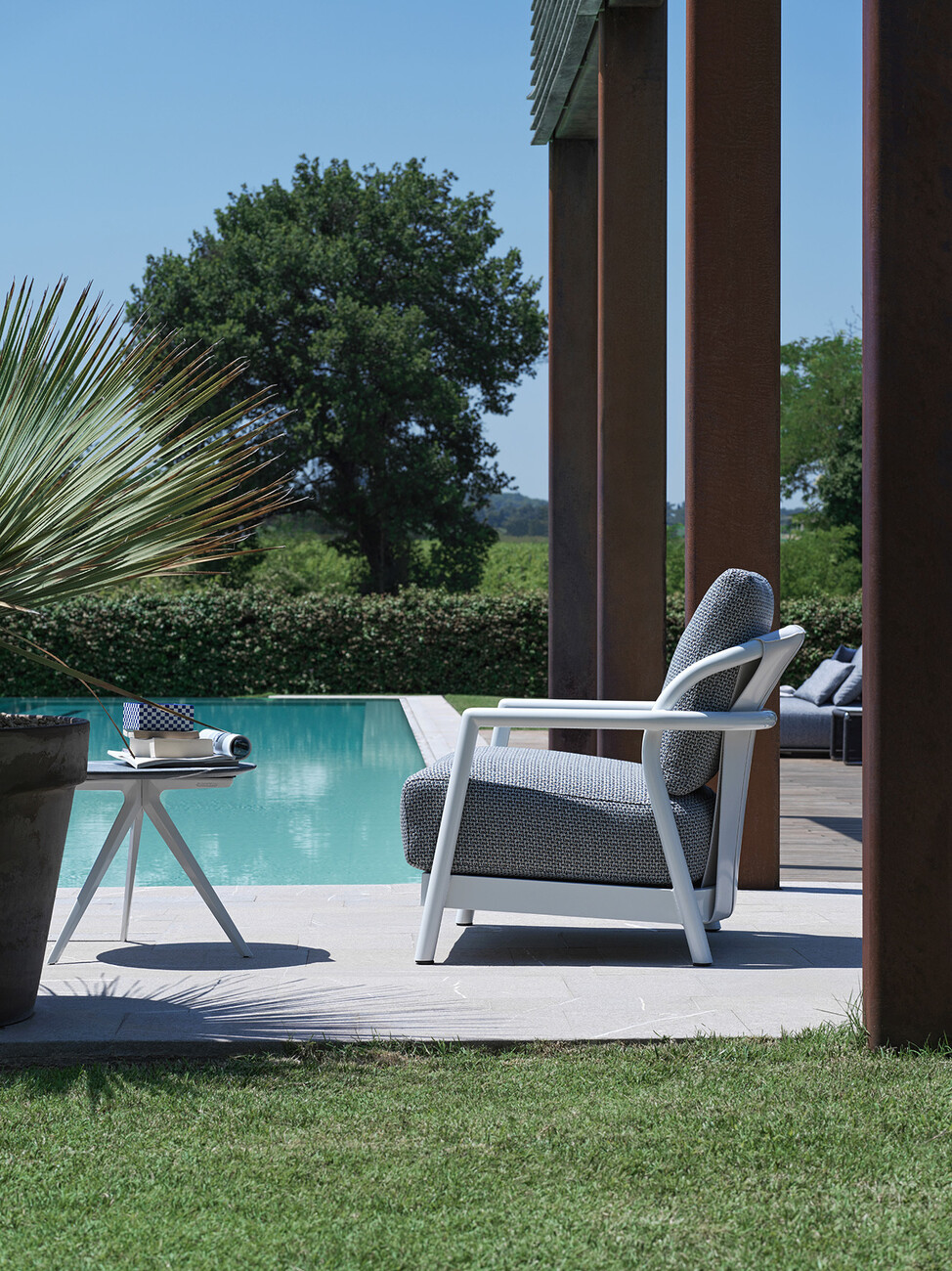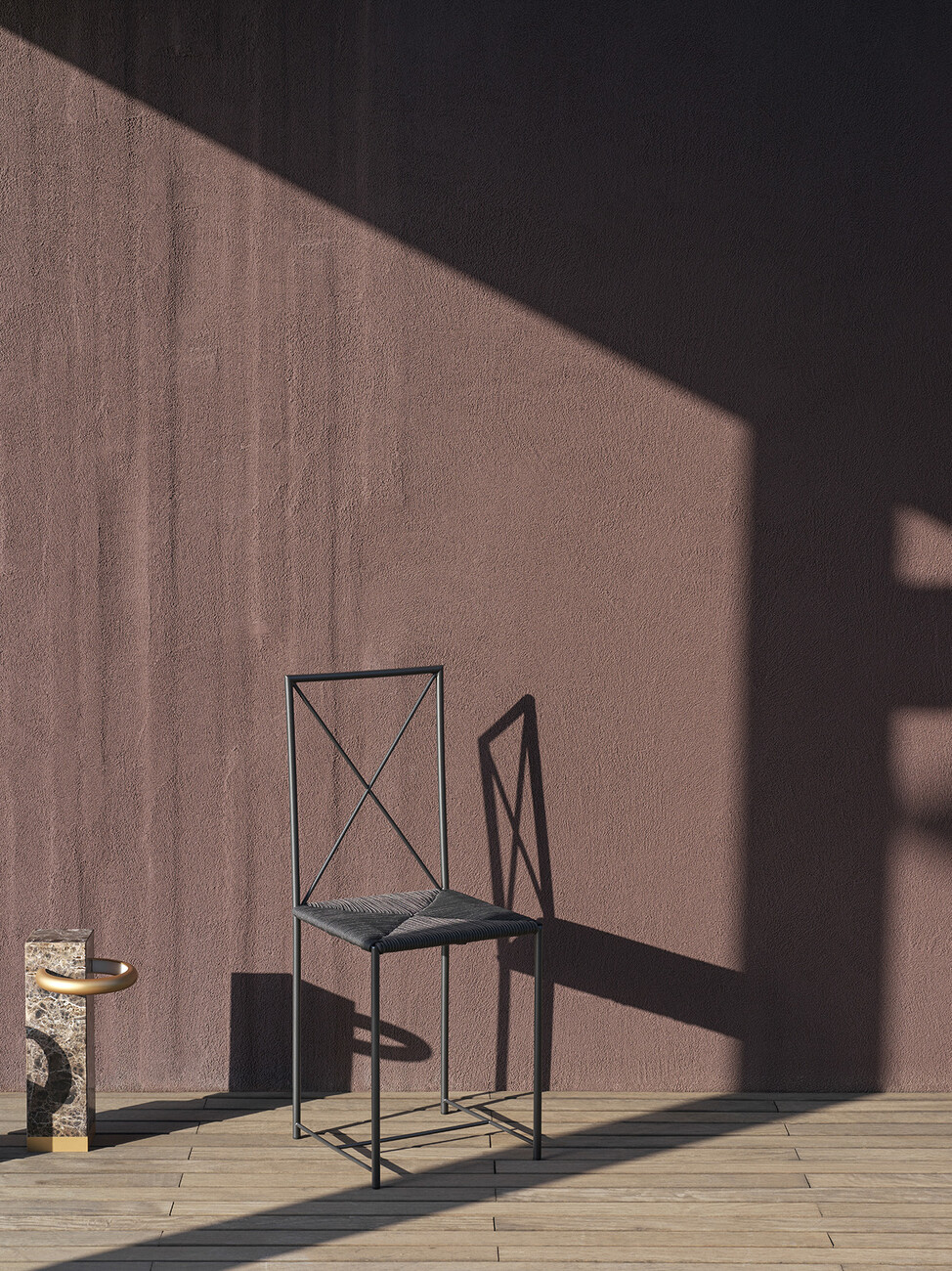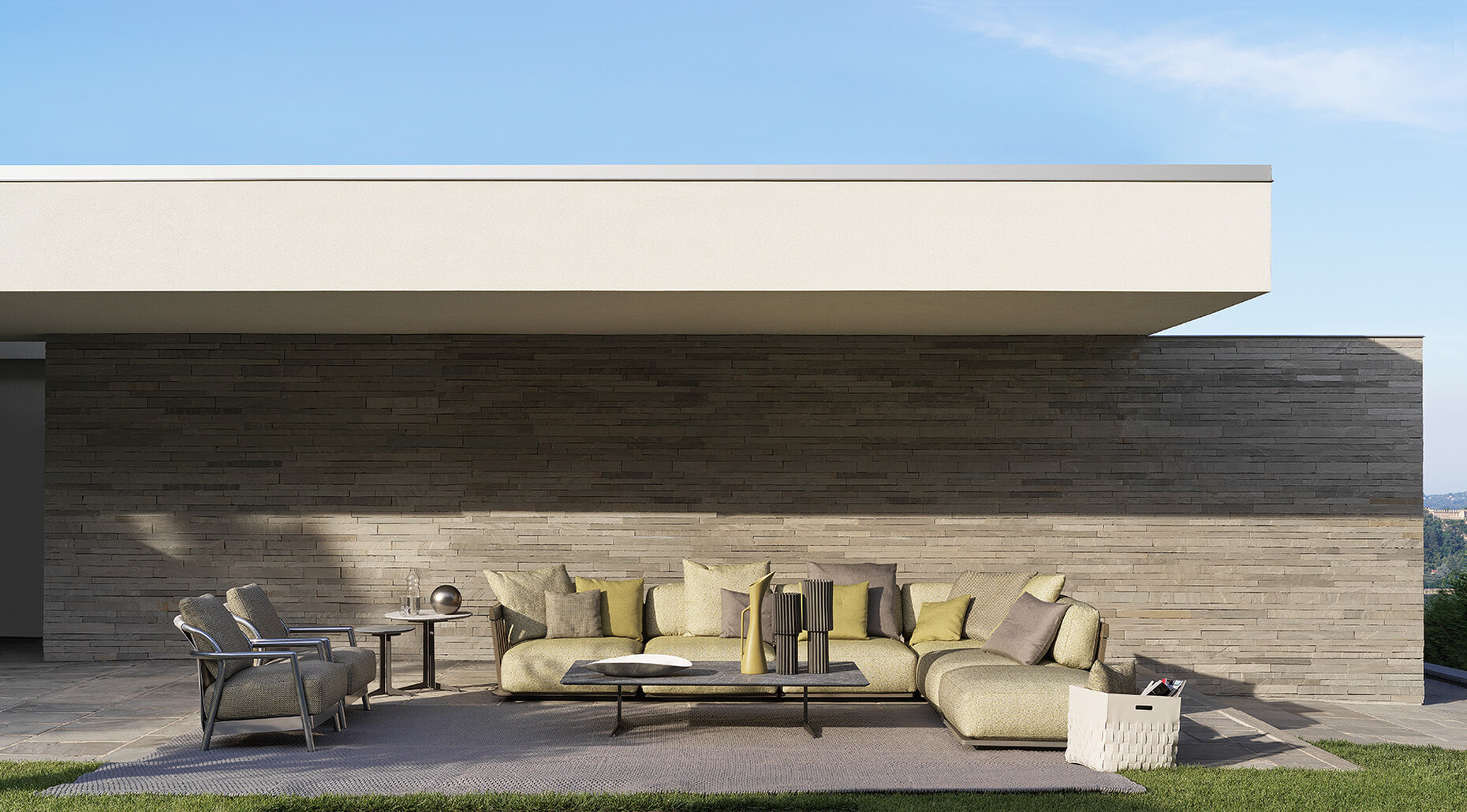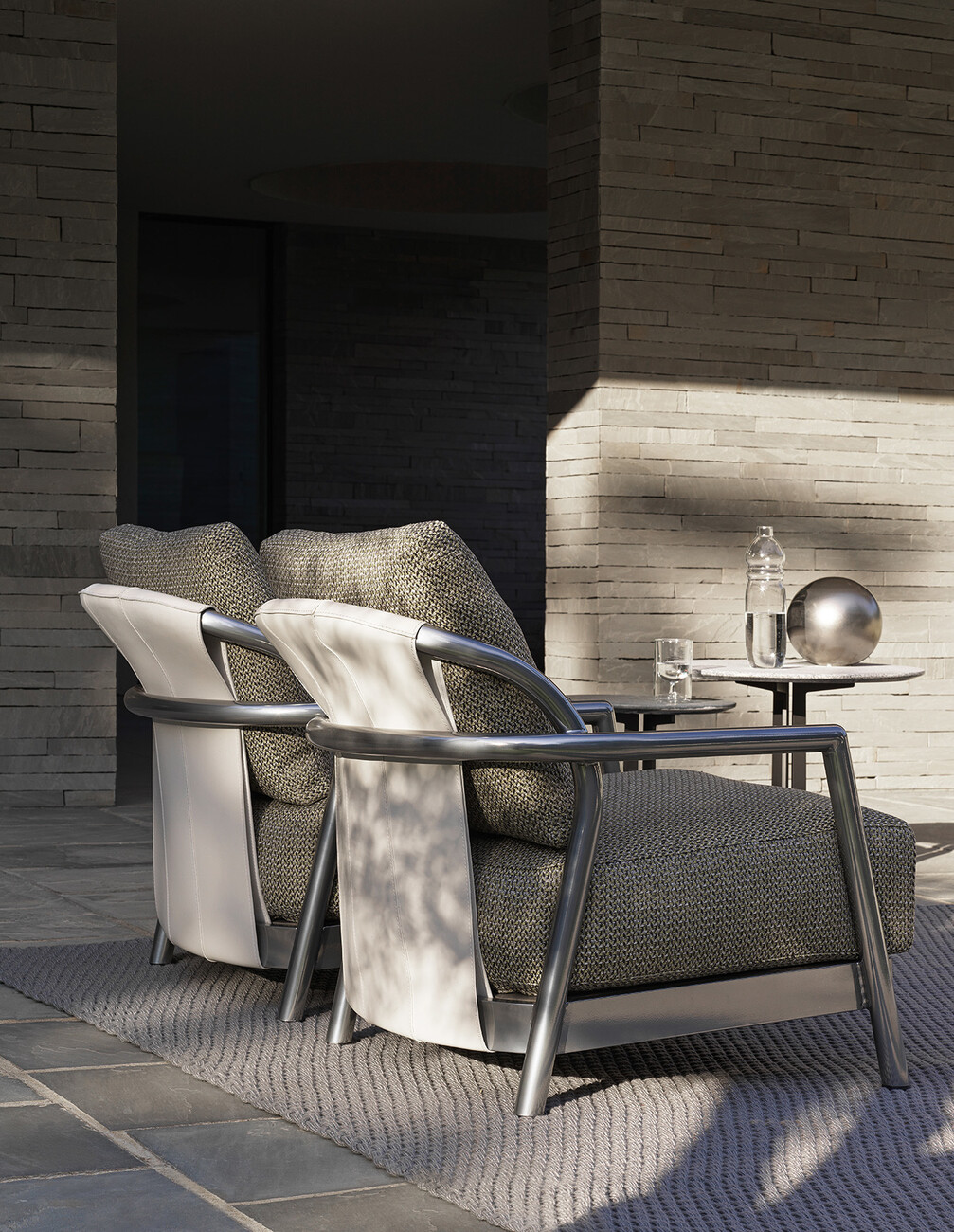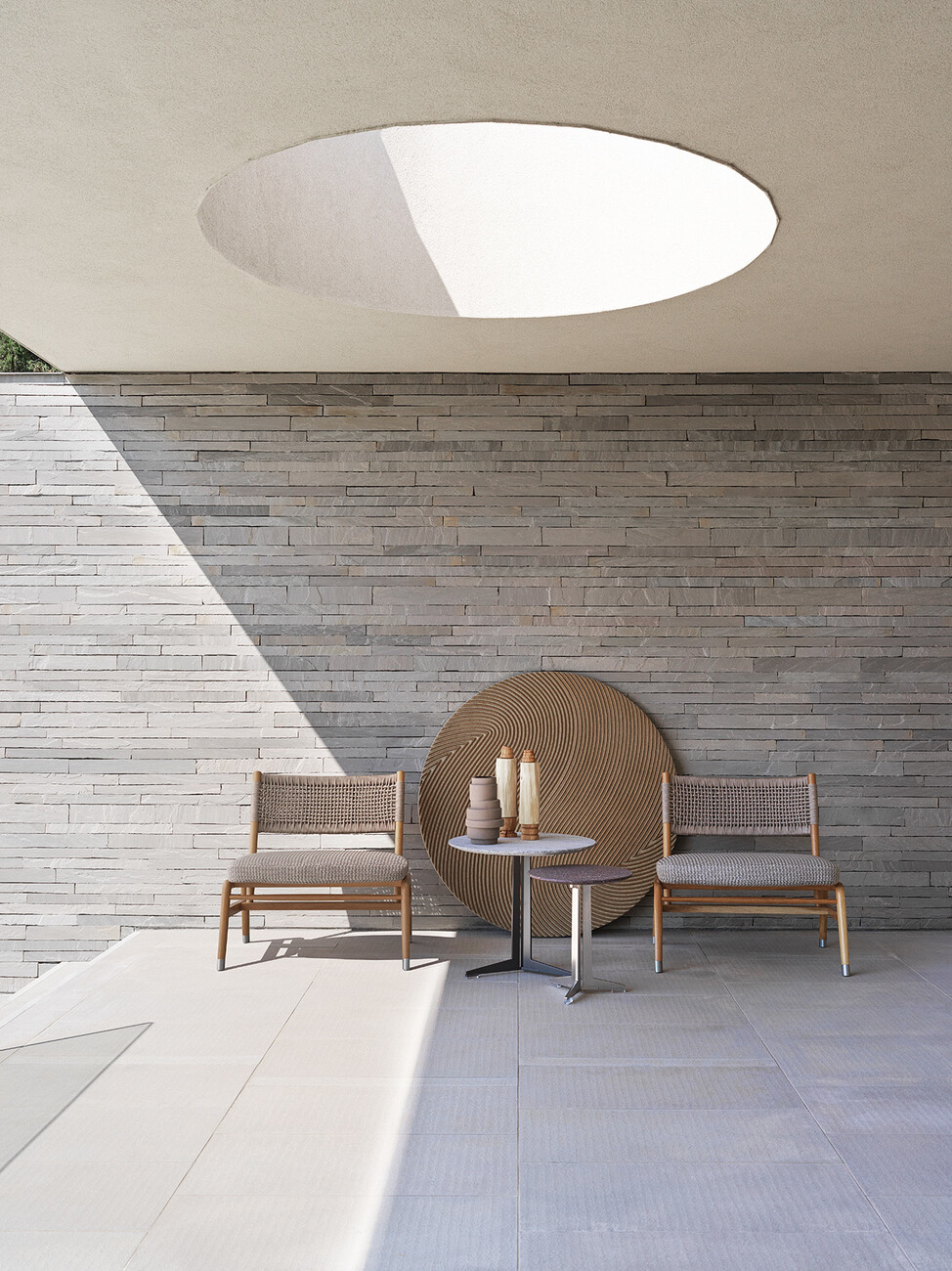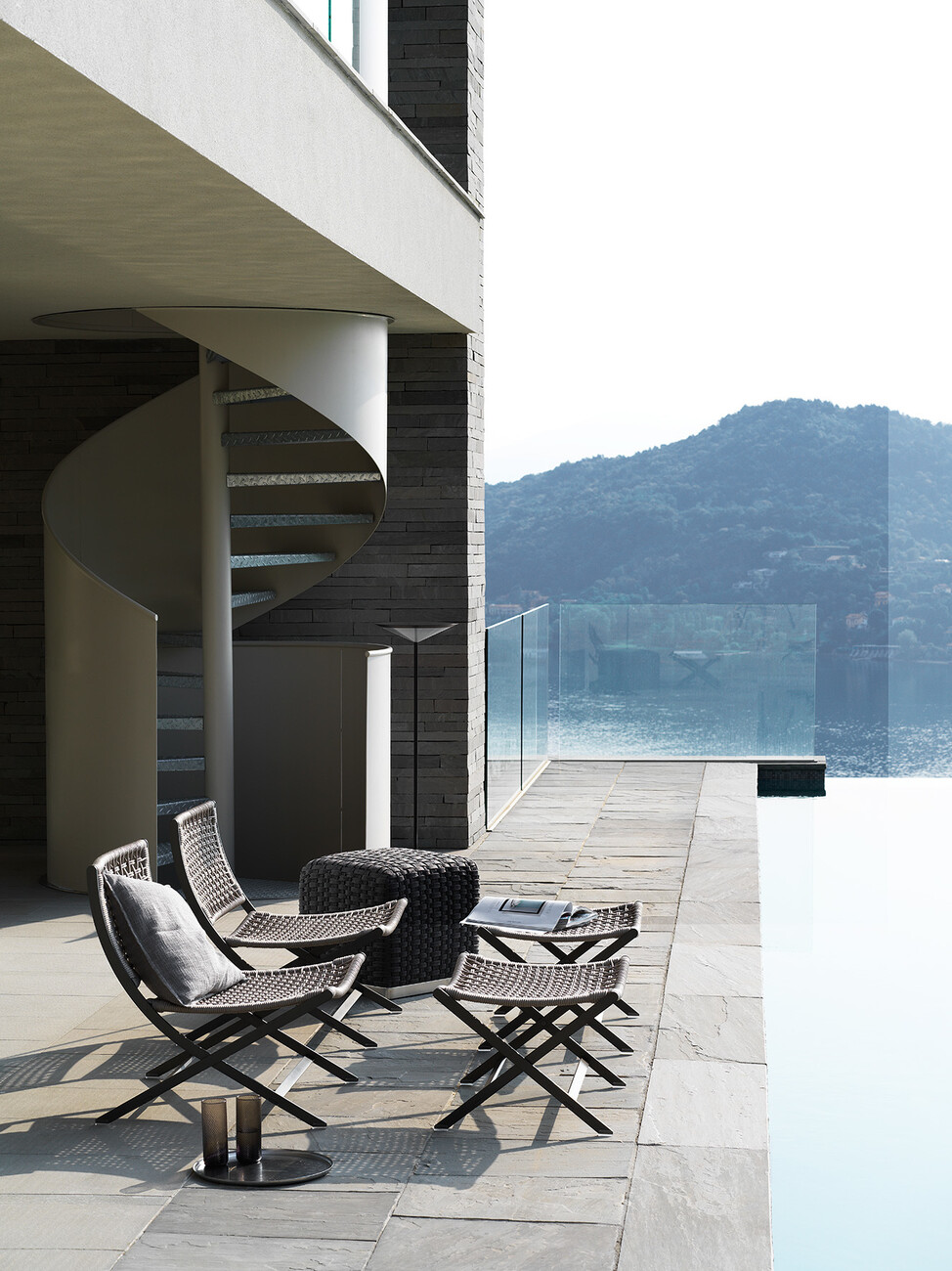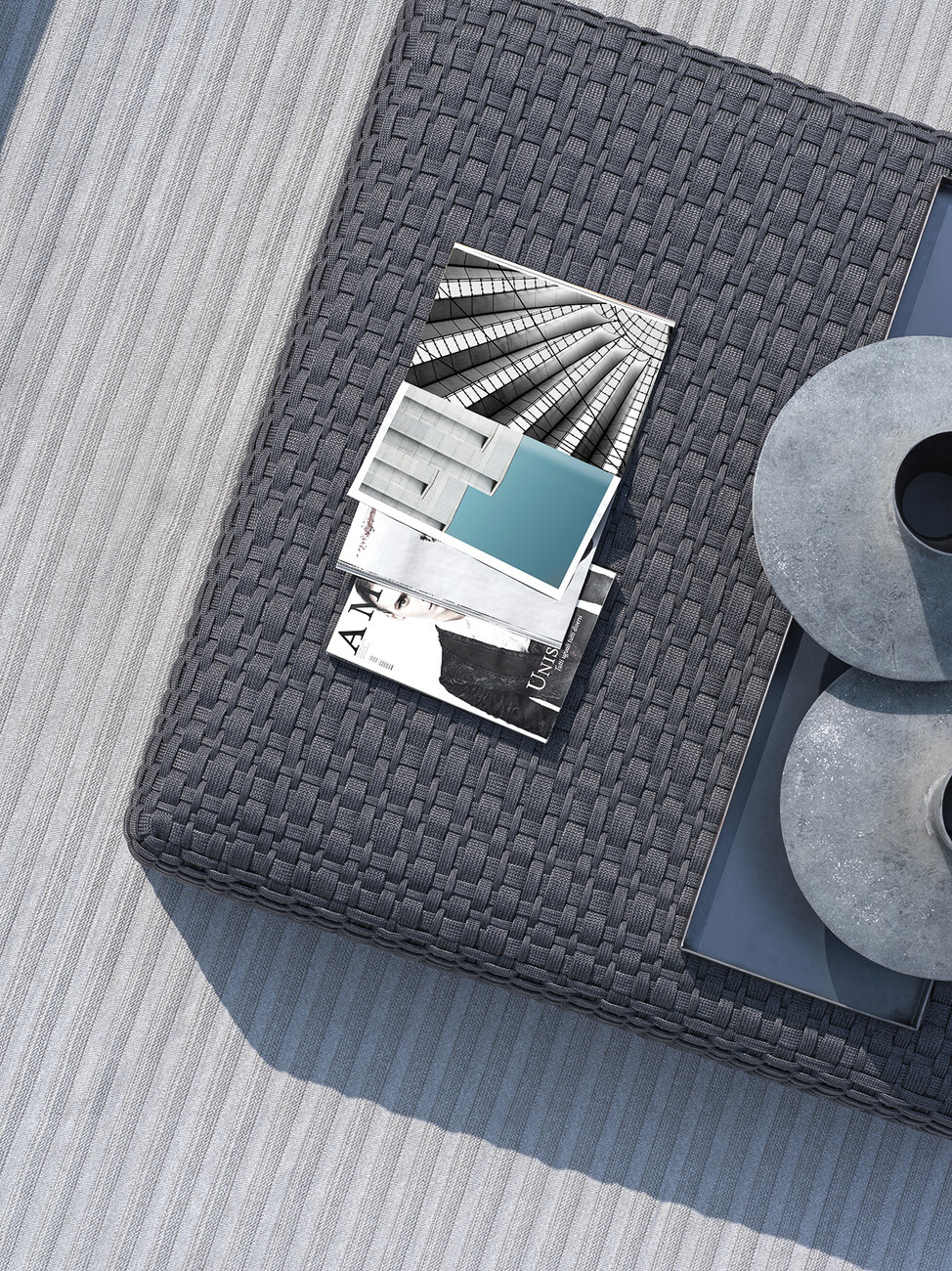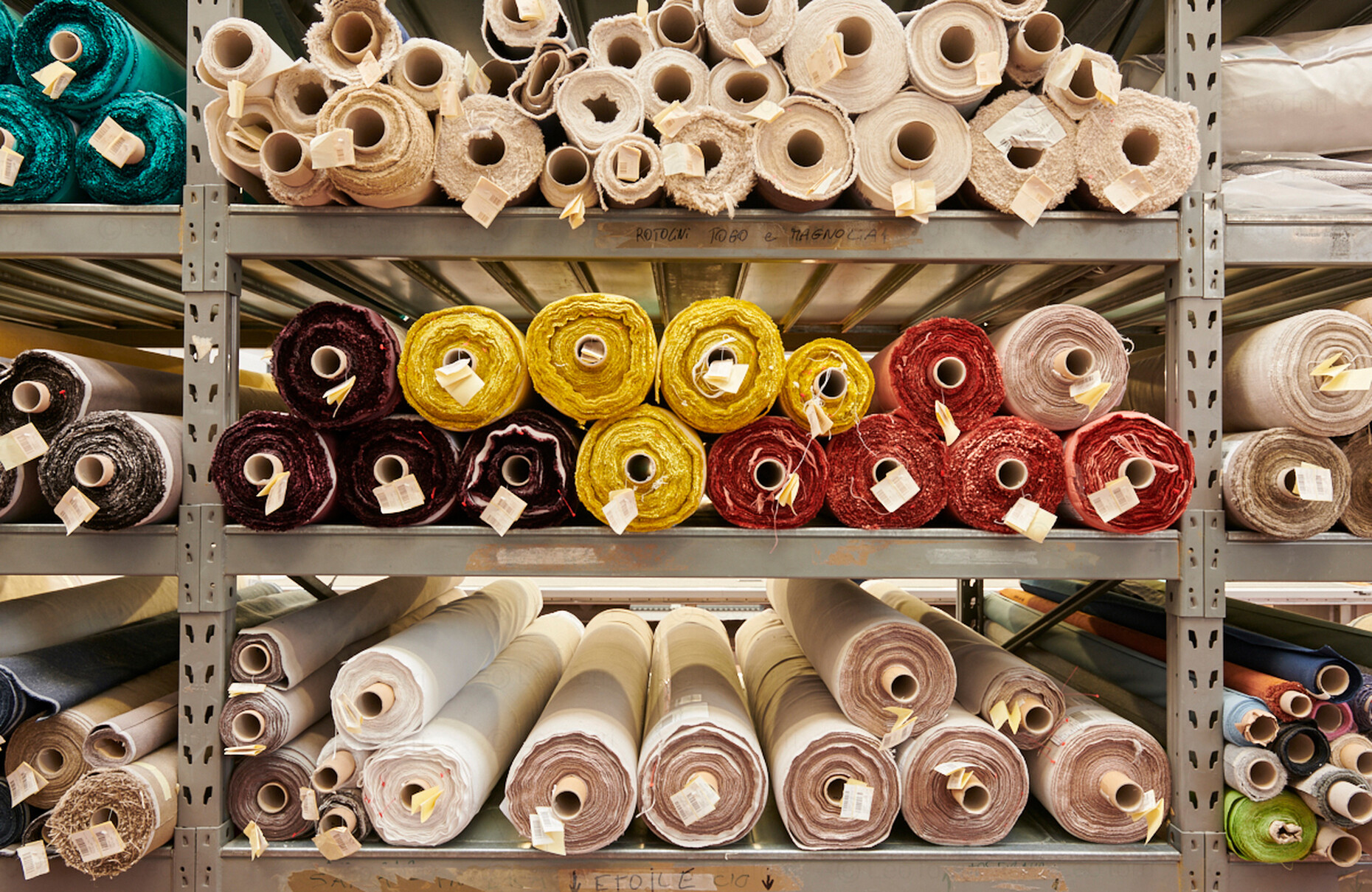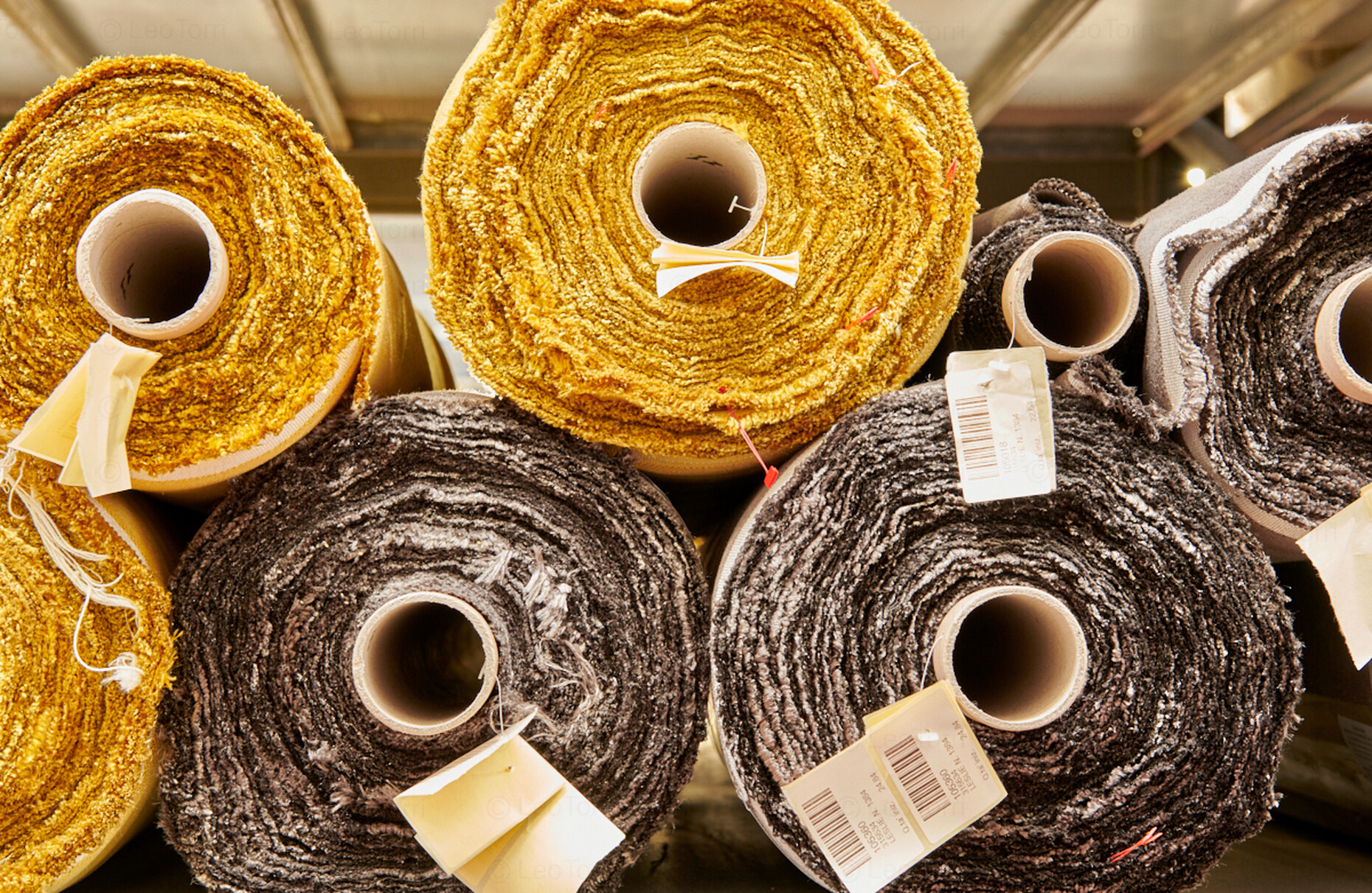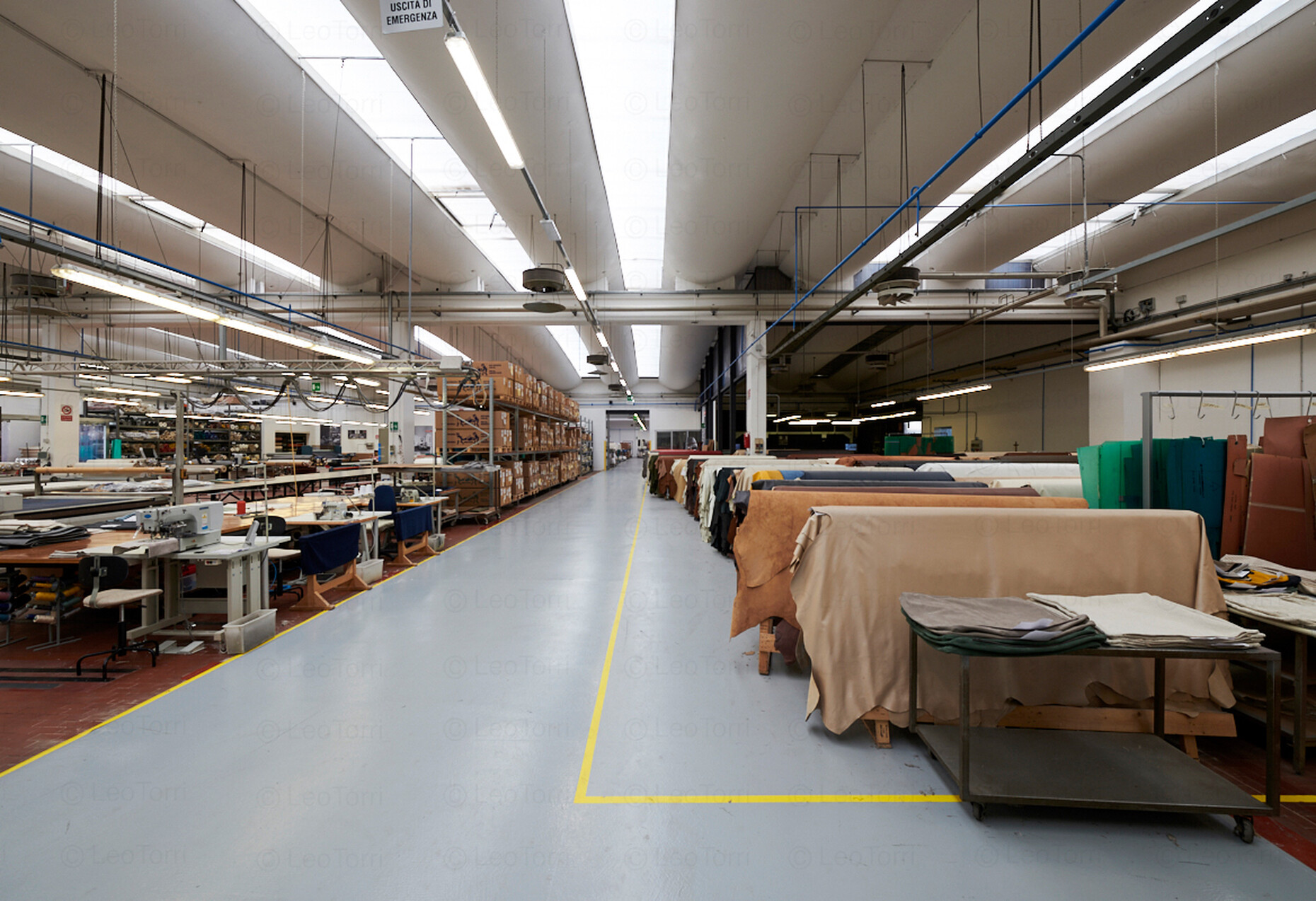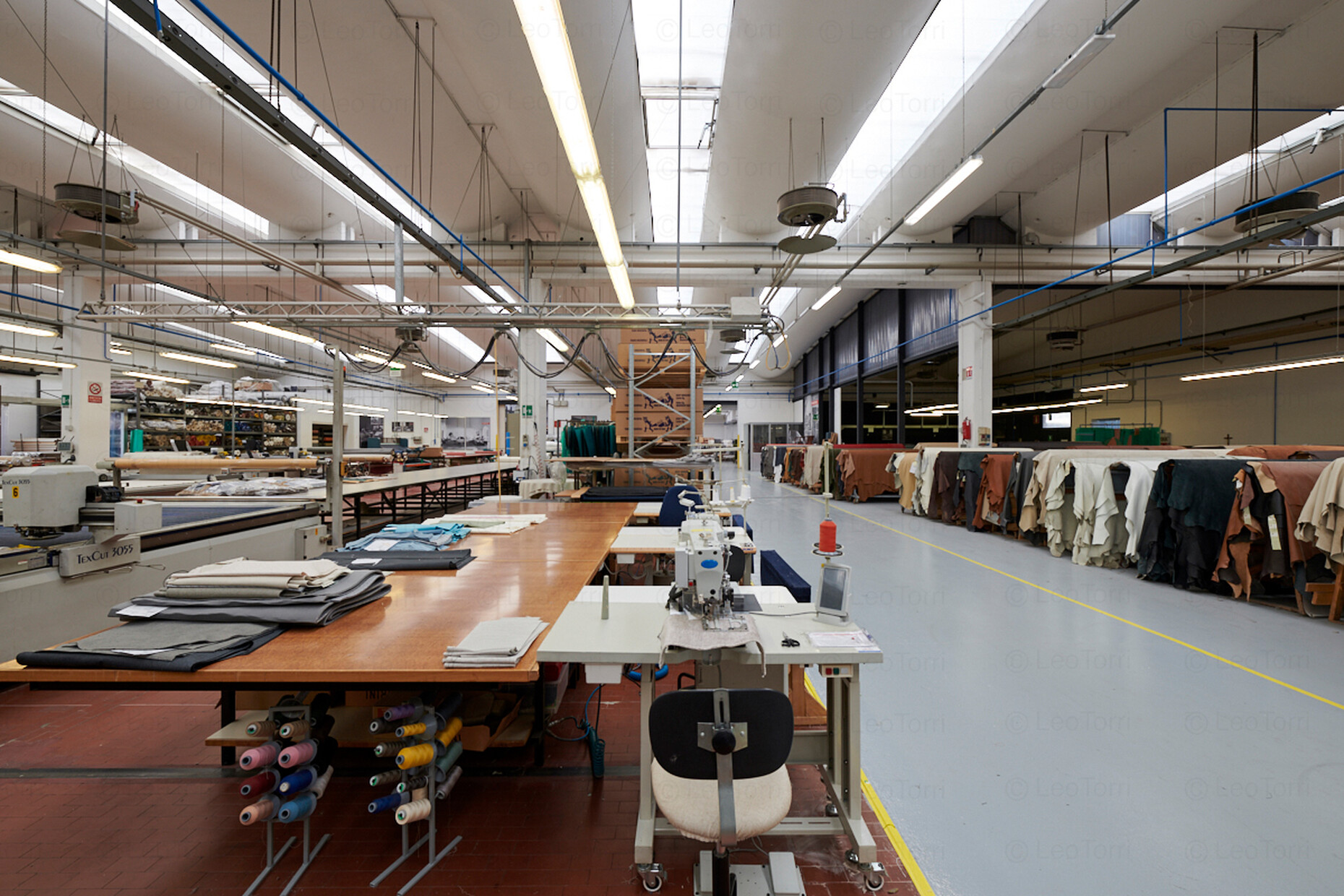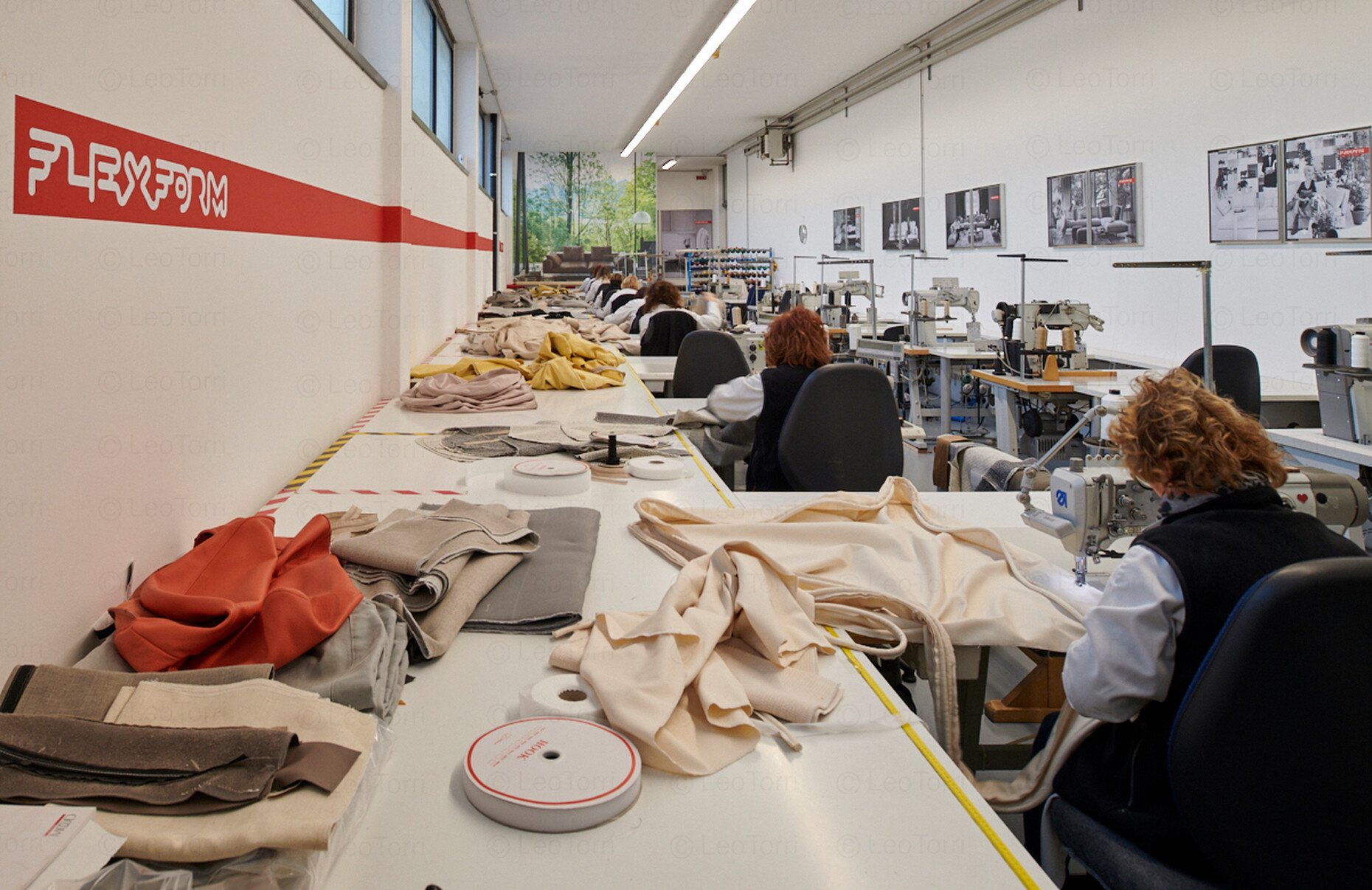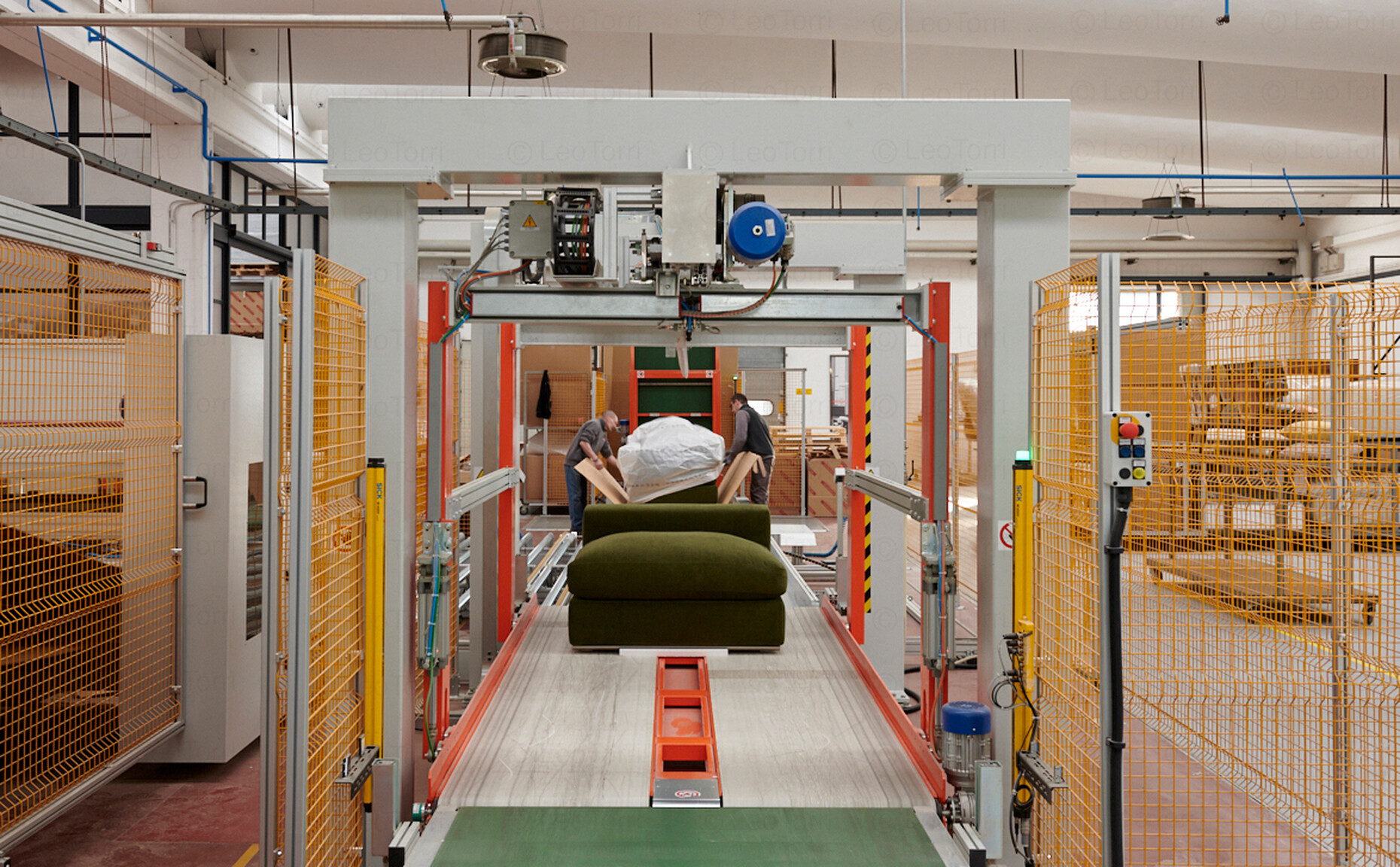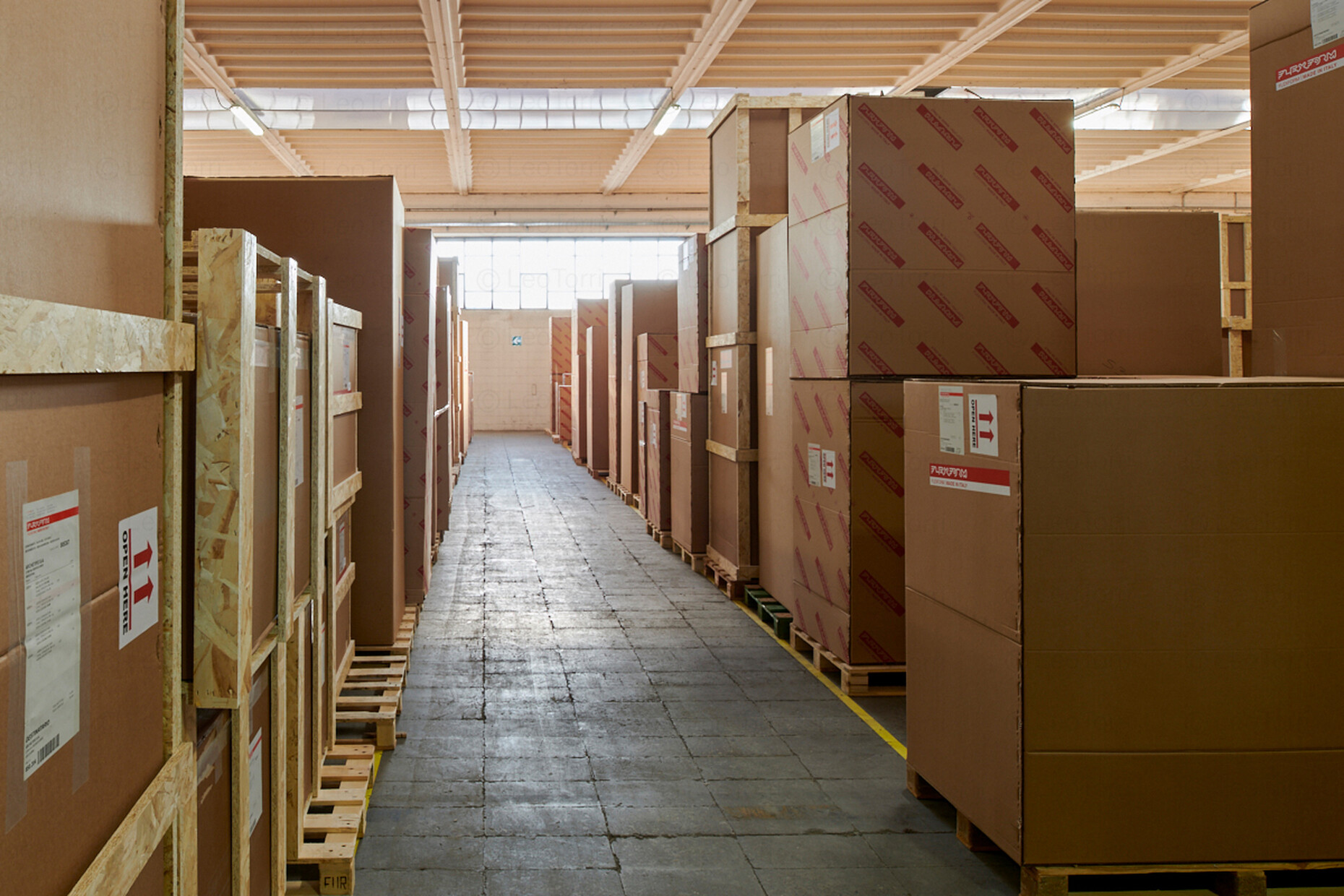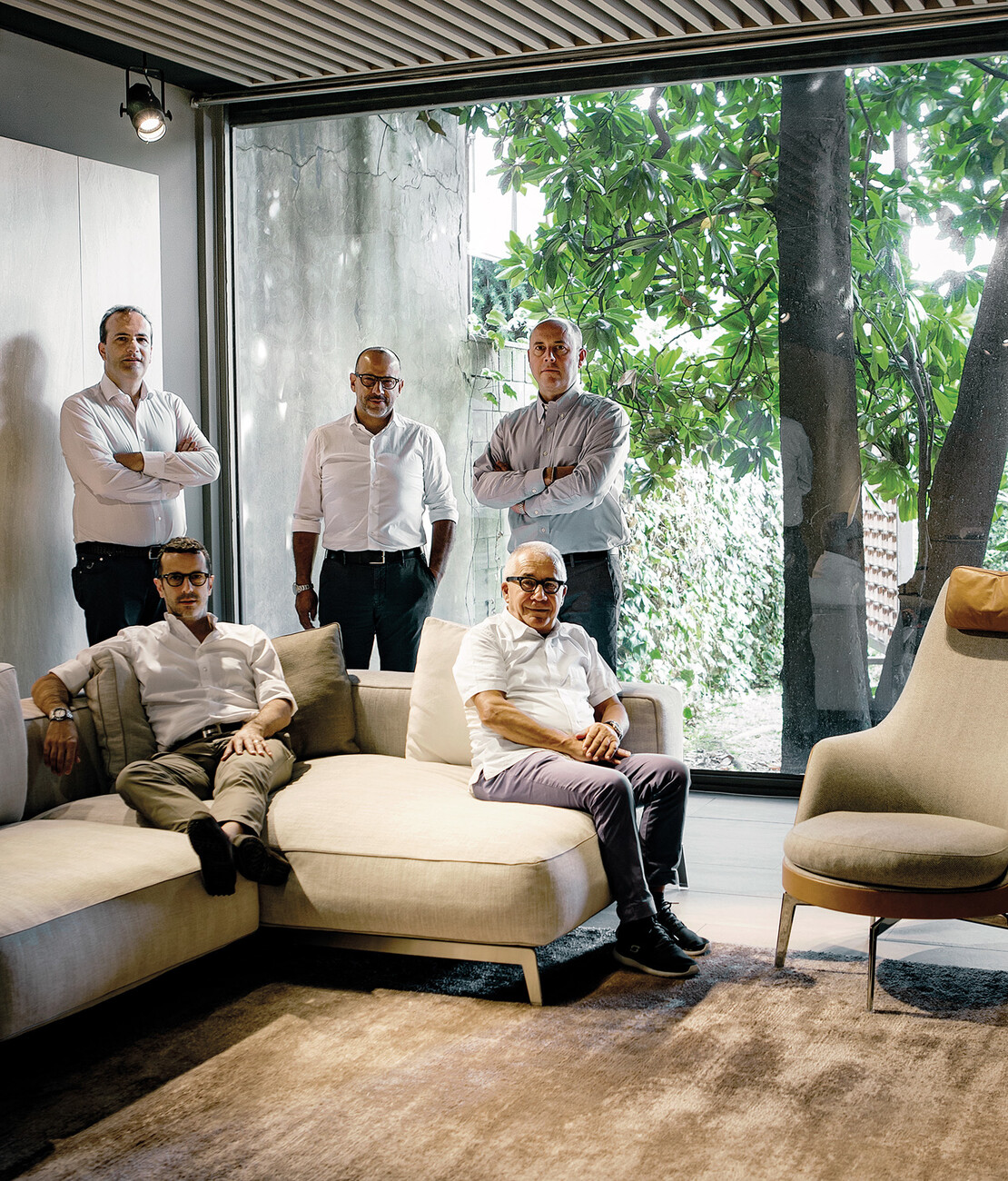Outside at home
The days when consumers were content with boring plastic recliners when it came to outdoor furniture are long past. “Outdoor areas are increasingly becoming something to be enjoyed throughout the year. They are becoming an extension of the interior, and are worthy of the same careful attention,” is how Flexform describes it. In 2001, with its “Groundpiece” by Antonio Citterio, the Italian manufacturer from Meda, near Milan, launched a sofa which immediately created an international style of its own – a low-slung lounge collection with mountains of cushions, a modular concept and decorated only with a simple metal trim at floor level. With its combination of maximum comfort and restrained style it lent upholstery new, informal aesthetics. Since then, Flexform has continued to grow and is now taking its premium furnishings outdoors. It goes without saying that these include those low combinations, adorned by a generous number of the cushions that are so characteristic of Flexform and that promise that extra touch of comfort. Items such as the “Vulcano” sofa, which can be combined with two chaises longues to create a low seating and lounger arrangement. Flexform sometimes uses an aesthetic meshwork of polypropylene strands for decorative purposes and to reinforce its backrests, be it for its “Ortigia” armchair, or to cover its “Phuket” ottoman. A nod to the handicraft that is rush wickerwork, which Flexform uses for its indoor furniture. Furthermore, the water-repellent textile covers are soft to the touch. Lots of the feet of the seating furniture are made of African Iroko wood, whose hardness makes it popular in boat construction. Robust, premium materials such as solid wood and quality processing testify to Flexform’s experience in fitting out luxurious yachts. This know-how ensures that the company’s outdoor furniture can withstand changing weather conditions for several years.
Always balanced
However, alongside voluminous, modular seating combinations such as its “Grandemare” sofa, Flexform’s product portfolio also includes armchairs with sweeping aluminum armrests such as “Alison” and elegant tables and chairs such as “Moka” made of rustproof chromium nickel steel. For Flexform, timeless design is not merely a hackneyed marketing phrase. The design for the frame of “Moka”, with its glass tabletop, dates all the way back to the late 1930s and yet fits in perfectly with current designs and outdoors. Alongside elegant design and its great modularity, its colors are also key to the collection’s eminent adaptability – Flexform’s aesthetic vocabulary is inspired by the palette of prominent Italian painter and graphic artist Giorgio Morandi. Here, the neutral hues favored by the artist for his still lifes, such as ivory and warm shades of gray, are sometimes accentuated by soft highlights such as green, yellow or burgundy. With this balanced look, Flexform’s outdoor furniture blends in effortlessly and harmoniously with the colors of the natural world.
Flexform is inextricably linked with the Galimberti family. Established in 1967 by three brothers, Romeo, Pietro and Agostino Galimberti, the company is still family-owned. Flexform is currently managed by the founders’ sons and grandchildren. As they report, “The family is of great importance, it is an immeasurable source of resources, inspiration and specialist knowledge.” The “we” concept is important for Flexform. It also means that from the outset the company was able to rely on the region of Meda’s traditional metal and wood processing skills. Since the company’s beginnings in 1959 Flexform products have been crafted by hand. Furthermore, the family relied on creative collaboration with architects and designers such as Joe Colombo, Asnago-Vender, Cini Boeri, Rodolfo Bonetto and, of course, Antonio Citterio. Its essential shapes and its focus on families of products instead of on individual pieces played a pivotal role in the company’s success. Taking this light elegance outdoors is a logical step.
